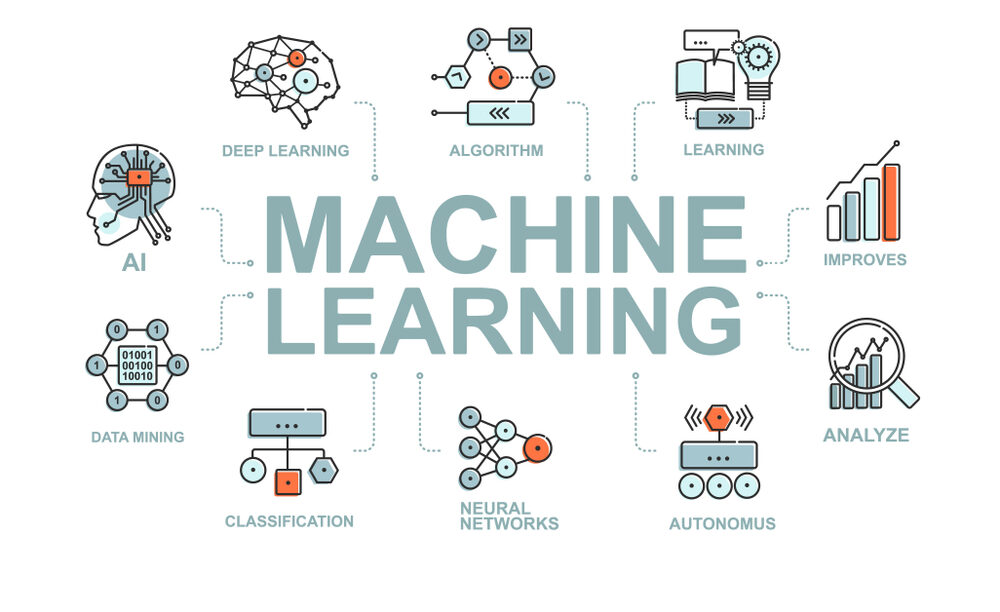Introduction to Machine Learning
In recent years, Machine Learning (ML) has emerged as one of the most transformative technologies of our time. From personalized recommendations on streaming platforms to self-driving cars, machine learning is reshaping industries and redefining what is possible with data. But what exactly is machine learning, and why does it matter? This blog post will provide a beginner-friendly introduction to the fascinating world of machine learning.
What is Machine Learning?
Machine learning is a subset of Artificial Intelligence (AI) that enables computers to learn from data and improve their performance on a task without being explicitly programmed. Instead of writing detailed step-by-step instructions for every scenario, we train algorithms to recognize patterns and make decisions based on data.
In simple terms, machine learning involves:
1. Feeding data into an algorithm.
2. Training the algorithm to recognize patterns or relationships within the data.
3. Using the trained algorithm to make predictions or decisions on new data.
How Does Machine Learning Work?
At the core of machine learning is the concept of training a model. Here’s a high-level overview of how it works:
1. Data Collection: The first step is gathering data relevant to the problem. For example, if you're building a model to recognize images of cats, you'd need a dataset containing labeled images of cats and non-cats.
2. Data Preprocessing: Raw data often needs cleaning and transformation. This step may involve removing duplicates, handling missing values, or scaling numerical data.
3. Choosing an Algorithm: Different algorithms work better for different tasks. Some popular algorithms include:
- Linear Regression
- Decision Trees
- Neural Networks
4. Training the Model: During this phase, the algorithm learns by analyzing the training data. It adjusts its parameters to minimize errors in predictions.
5. Evaluation: After training, the model is tested on a separate dataset to assess its performance.
6. Deployment: Once the model performs well, it can be deployed in real-world applications to make predictions or automate decisions.
Types of Machine Learning
Machine learning can be broadly categorized into three types:
1. Supervised Learning
- The algorithm learns from labeled data, where each input is paired with the correct output.
- Example: Predicting house prices based on features like size and location.
2. Unsupervised Learning
- The algorithm works with unlabeled data and identifies hidden patterns or structures.
- Example: Grouping customers into segments based on purchasing behavior.
3. Reinforcement Learning
- The algorithm learns by interacting with an environment and receiving feedback in the form of rewards or penalties.
- Example: Training a robot to navigate through a maze.
Why is Machine Learning Important?
Machine learning is driving innovation across numerous domains. Here are some key reasons why it matters:
1. Automation: ML enables automation of complex tasks, saving time and resources.
2. Personalization: Algorithms tailor recommendations and services to individual preferences (e.g., Netflix, Spotify).
3. Better Decision-Making: Data-driven insights improve decision-making in fields like healthcare, finance, and logistics.
4. Innovation: ML has unlocked new possibilities, such as detecting diseases early or creating realistic language models like ChatGPT.
Common Applications of Machine Learning
Machine learning is everywhere. Here are some examples of how it’s being used today:
- Healthcare: Diagnosing diseases, predicting patient outcomes, and optimizing treatment plans.
- Finance: Detecting fraudulent transactions and managing investment portfolios.
- Transportation: Powering self-driving cars and optimizing delivery routes.
- Retail: Inventory management and personalized marketing campaigns.
- Entertainment: Content recommendations on platforms like YouTube and Netflix.
Getting Started with Machine Learning
If you're interested in learning machine learning, here are some steps to get started:
1. Learn the Basics: Familiarize yourself with programming languages like Python and libraries like NumPy, pandas, and scikit-learn.
2. Study Mathematics: Focus on key concepts like linear algebra, calculus, probability, and statistics.
3. Explore Online Courses: Platforms like Coursera, edX, and YouTube offer excellent beginner courses.
4. Practice on Datasets: Experiment with real-world datasets available on Kaggle or UCI Machine Learning Repository.
5. Build Projects: Apply your skills to small projects like predicting stock prices or creating a movie recommendation system.
Conclusion
Machine learning is an exciting and rapidly evolving field with endless possibilities. Whether you're a student, developer, or enthusiast, understanding machine learning can open doors to innovative solutions and new career opportunities. By diving into this domain, you're not just learning about technology – you're exploring the future.
Ready to start your machine learning journey? Take the first step today!













0 Comments